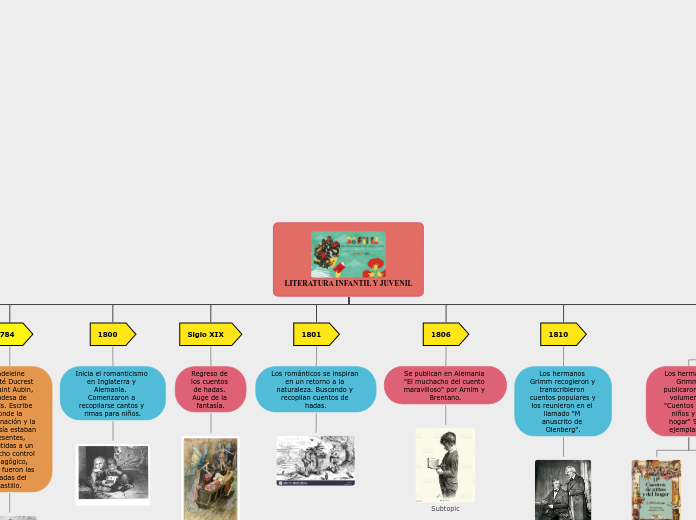Origen de la lengua Castellana
To name your story, you have to think about the overall message and what you want your audience to understand from the story. Also, make it relevant and easy to remember.
El Inicio del Castellano
The ending of a story is essential. We all know that if the ending is weak, what happened before loses its importance. So make it unpredictable, but fair. A resolved ending answers all the questions and ties up any loose threads from the plot.
Siglos XVI y XVII
El castellano alcanza prestigio internacional, periodo conocido como el siglo de oro de la literatura española.
Siglo XVIII
Fundación de la real academia española, se publica una ortografía, una gramatica y el diccionario de autoridad
Glosas
This is the closure section of the story.
See examples of possible outcomes below:
- all problems have been solved
- it's clear how each one of your characters ends up
- your main character is transformed by the challenge
Primeros textos escritos de castellano, fueron escrituras hechas por monjes que no entendería
Try answering these questions to come up with a closure:
- Have all the problems been solved?
- Is there a clear picture of what happens with each character in the story?
- Has the challenge transformed your main character?
- How do the characters feel in the end?
Reyes catolicos
1492 es la fecha inicial de la consolidación del español. con el descubrimiento de américa se expande el castellano por el mundo.
Castellano
This is the moment when the main character surpasses the last obstacle and finally faces their greatest challenge.
The climax usually follows one of these patterns:
- realization
- resolution
- choice
Type in your answer.
Tiene su origen en el condado de castilla, Al final de la edad media
Alfonso X EL SABIO
Potencio el castellano como lengua oficial, literaria y de cultura, dotada de una norma escrita
Época Pre romana y Romana
218 A. C
Superioridad militar, económica y cultura sobre los pueblos habitaban la península.
Latin Vulgar
Latín hablando, utilizado por comerciantes, agricultores y el pueblo en general presenta rasgos, diferentes según la zona
Lenguas que nacen del latín
Italiano, español, frances, portugues, rumano, gallego y catalan
Latin Culto
Latín literario. utilizado por aquellos escritores , filósofos, los cierogos y escritores.
Época Mozárabe
The middle of the story is where you add layers of complications that will lead to the end. Reveal more about the character's journey. Did their personality go through changes? How did they overcome the challenges? And as you build up the story’s central conflict, make it more personal to that character. Also, from the middle act, you have to lead into the final act.
Permanece en la peninsula casi ocho siglos. proceso alternativamente momentos de paz momentos de guerra.
There wouldn't be any tension and excitement in your story if there weren't any obstacles in your character's way.
No imponen su cultura, su lengua ni su religión, al cabo fue una de las lenguas que mas influyo
A story is nothing more than a character overcoming a series of difficulties to reach the desired goal. Obstacles usually create suspense and conflict. In overcoming obstacles, there is growth: weak becomes strong; hatred turns into love; sadness into happiness; wrong into right; lies into truth; or evil becomes good.
See a few examples below:
- stopping a meteor
- finding a killer
- finding love
Reconquista
Lenta recuperación de los territorios de andaluz, por parte de los cristianos, periodo que termina en 1492.
Mozorable
Lengua romance de los hisparromanos que vivian en partes señaladas por los romanos
Your character(s) need(s) motivation in order to solve the challenge(s).
711 D. A
Secondary characters might also have motives that lead them to cross paths with the main character or which might trigger them to help the main character.
Época Visigoda
In the beginning of the story (or the exposition), you will need to introduce the setting and characters. You might also want to introduce the main conflict. This part of the story is important because it gives the reader necessary background information and maybe even a first insight into a character’s personality.
Fecha
Characters are essential to a good story. Usually, the protagonist(s) is/are the most affected by the plot. Introduce a character by focusing on their actions, interests, and occupation, as the physical appearance doesn't make a difference in most cases.
409 D. C
Type in the name of your character.
Invasiones barbaras. pueblo germanos que invadieron la peninsulas.
The setting (time & place) of a story can change throughout the plot.
Influencia fundamental en el derecho y en algunas costumbres
Sensory details include sight, sound, touch, smell, and taste. These details are important because they create depth in your setting.
See a few examples below:
- the smell of fresh bread
- the scent of freshly cut grass
- rain falling onto the windshield etc.
Visigodos
Aportan sobre todo vocablos relacionados con la guerra
The weather is an important element in your story because it can highly influence the ambiance and the mood of the characters.
Alaonos
Does your story include catastrophic weather? See a few suggestions below or add your own:
- hurricane, earthquake, storm, etc
Se adaptan a la cultura romana y adoptan el latín como lengua oficial
The time of the story can also change. It can describe the event of a single day or can include an entire year's plot. Anyway, don't forget to mention it.
Los Suavos
Provocan la fragmentacion del imperio romano
Your story can take place wherever your imagination will take you to.
For example: in an elevator, in an enchanted forest, etc. Don't forget to give details of the environment each time the setting changes, otherwise, the story can be confusing. Also, mention the seasons as each of them has unique weather and events.
Los Vandalos










